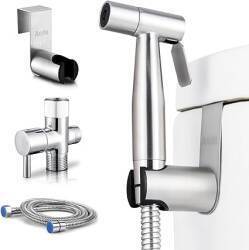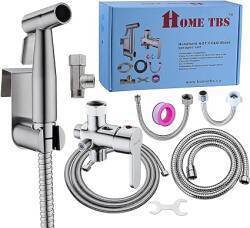
Casablanca and Tangier
Casablanca & Tangier:
Toilets of Morocco
Visiting Casablanca
I started and ended my visit to Morocco in Casablanca. I flew to Morocco from Chicago. Air France flies to several cities in Morocco, but buying the ticket through my Delta account limited my entry and exit to Casablanca.
There's not as much interesting history in Casablanca as in the imperial cities, and it certainly isn't like the movies with Humphrey Bogart or the Marx Brothers. Those were filmed in California on studio backlots. But there are still interesting things to see in Casablanca. And not just the plumbing—there's the Art Deco architecture from the early decades of the French Protectorate, and the huge Hassan II Mosque, one of the very few operating mosques that non-Muslims are allowed to enter due to regulations imposed by the colonial French in the 1910s.
Casablanca — Hotel Moroccan House
Guesthouses at Booking.comThe Hotel Moroccan House was a great place to stay. It's close to Casa Port, everyone's nickname for the Casablanca Port railway station. I would arrive at Casa Port on a train from the airport at the start of my trip. On the last day I would return there by train, and the hotel staff set up a car to take me to the airport for my extra-early-morning departure. My room was just US$ 30 a night through Booking.com, and look at the bathroom I had — a toilet and bidet, a sink, and a bathtub with shower:
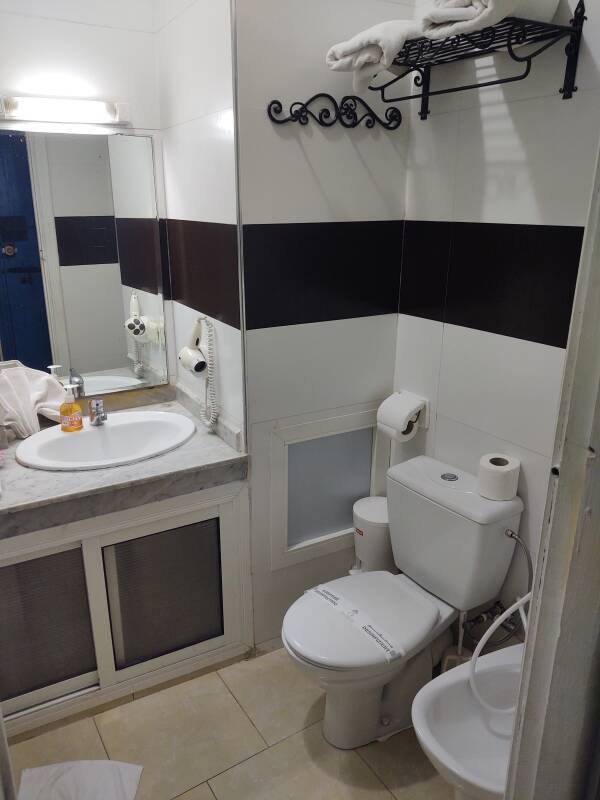
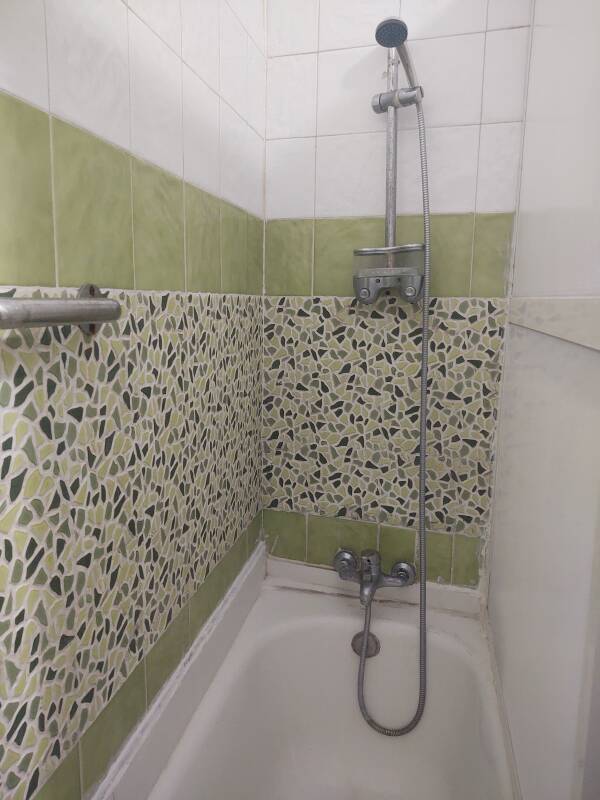
There was a shattaf, a hand-held bidet sprayer on a hose connected to the water supply running to the toilet. Connected that way, it was a cold-water-only spray. That will wake you up in the morning.
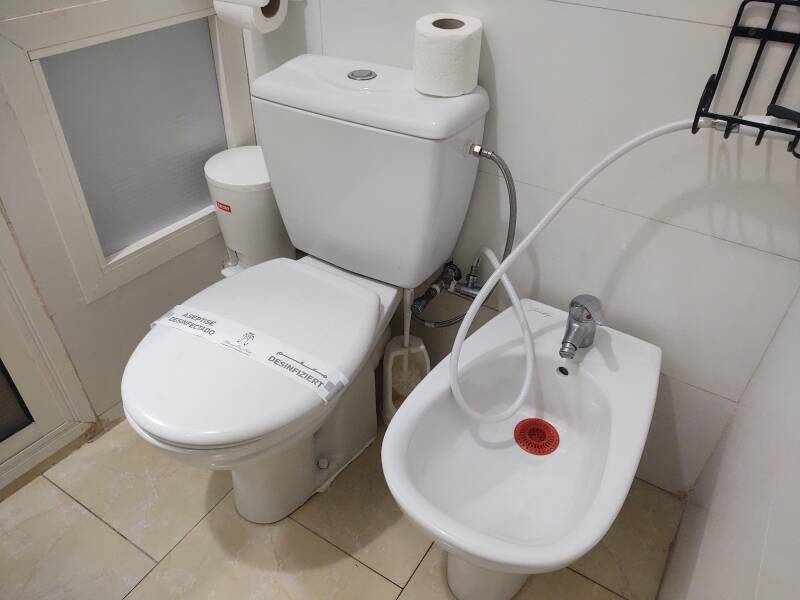
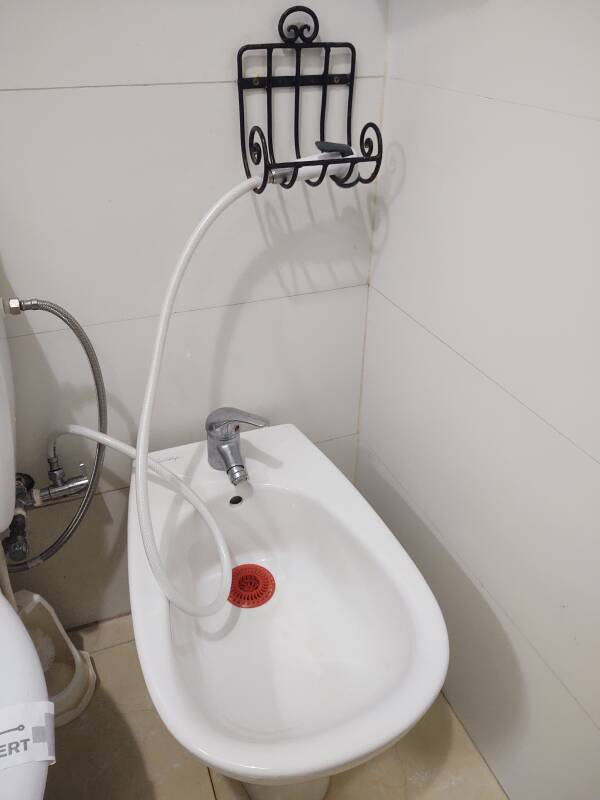
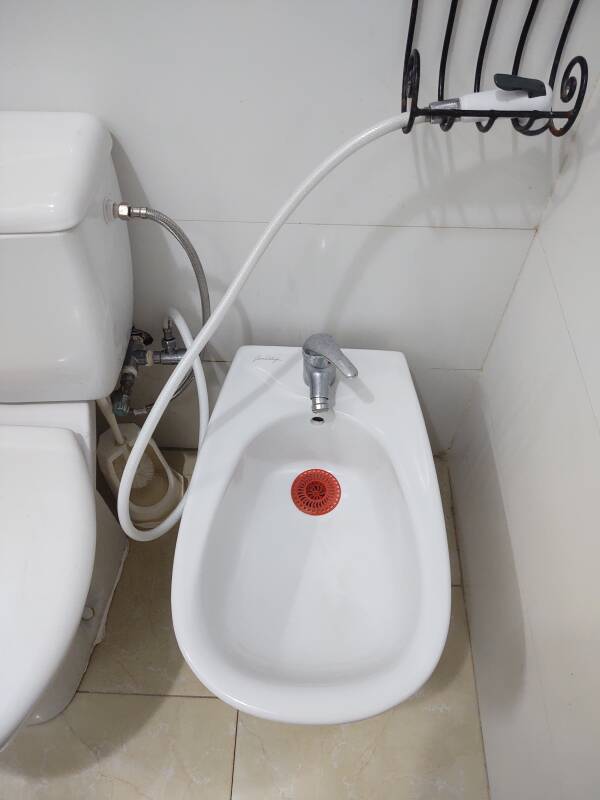
Of course a shattaf needs some sort of shattaf rack. A toilet paper holder works nicely.
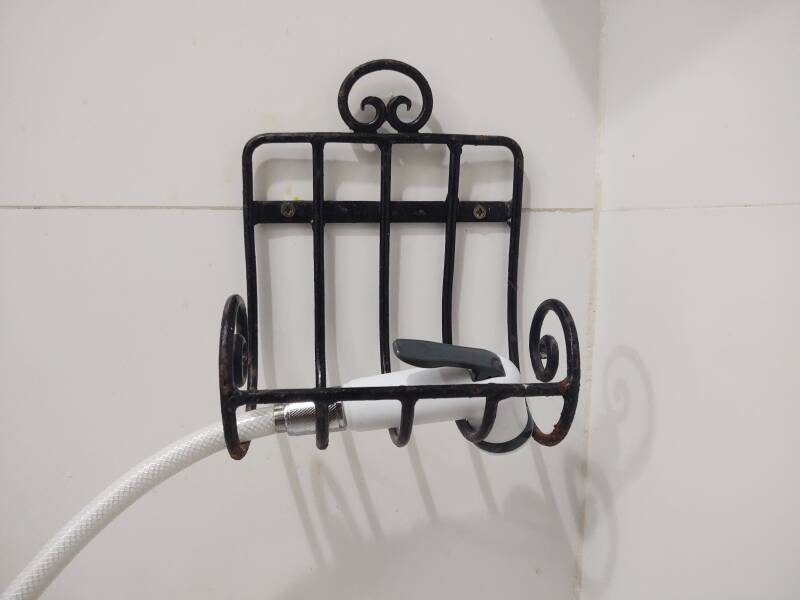
Casablanca — Hassan II Mosque Ablutions Facility
Visiting theHassan II Mosque
The Hassan II Mosque with its 210-meter minaret was the tallest religious structure in the world from its consecration in 1993 until a taller minaret was built in Algeria in 2019. It was taller than any other minaret, dome, steeple, or pyramid the world had ever seen.
The Great Pyramid of Khufu at Giza was just 146.6 meters tall originally, a little taller than Saint Peter's Basilica at 138.6 meters. The spire of Notre Dame de Paris was 91.4 meters before the 2019 fire.
The mosque's worship services host up to 25,000 people inside with up to 80,000 more in the huge plaza outside.
Islamichygiene
regulations
All those people need to ritually clean themselves before prayer. The Hassan II Mosque includes equally gigantic ablutions facilities, one for men and the other for women. See the dedicated page explaining Islamic hygiene regulations for details on when ritual cleansing is required, and what it involves. Here's a quick look at the large ablutions fountains.
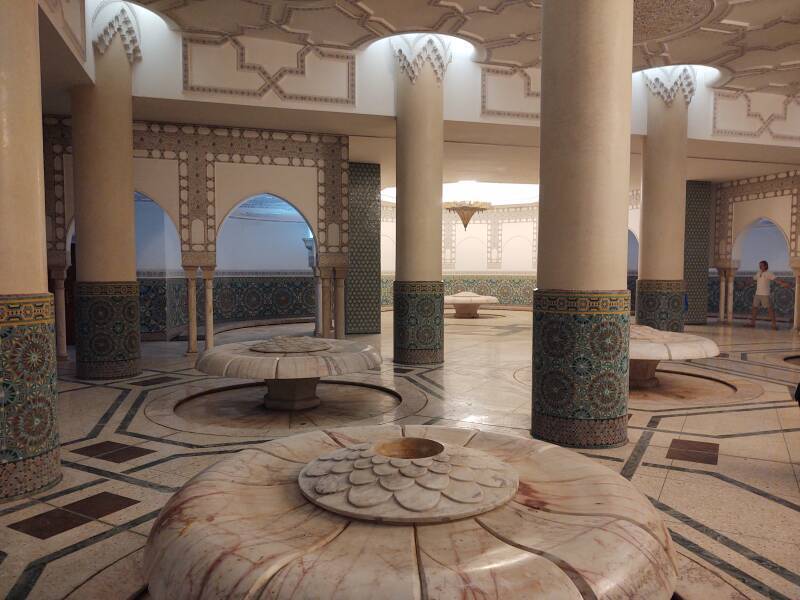
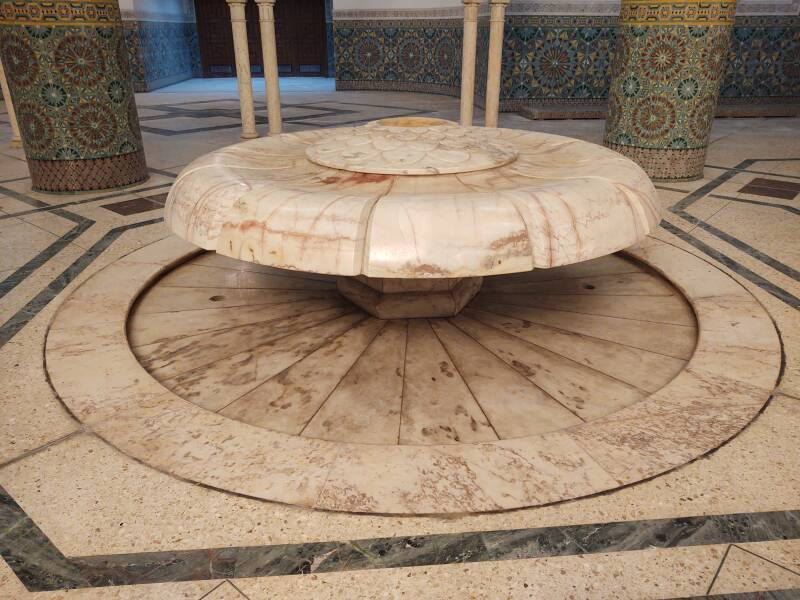
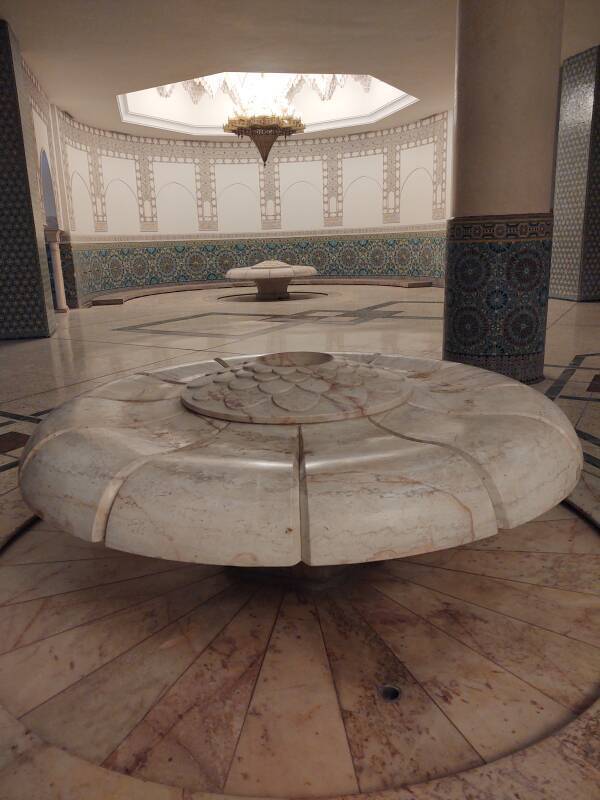
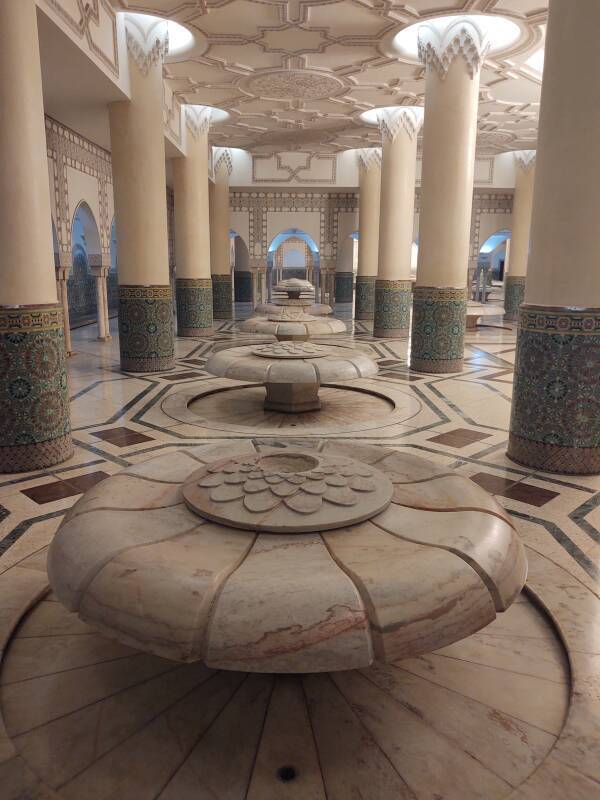
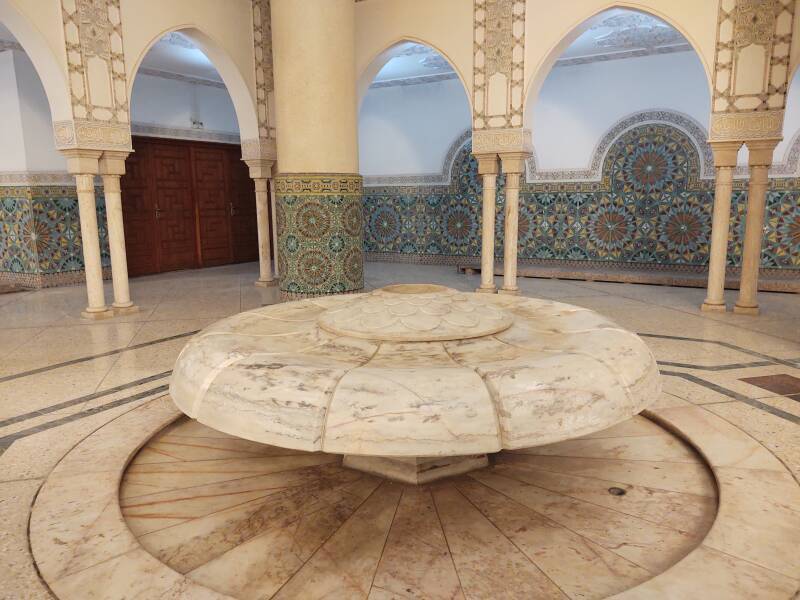
Casablanca — Muhammad V International Airport
To briefly jump to the very end of the trip, the Air France flight to Paris, where I would connect to a flight to Chicago, departed at 07:30. That required an arrival at the airport around 04:30.
Film noir had led me to believe that you could simply arrive at CMN, Casablanca's Muhammad IV International Airport, when your propeller-driven aircraft was starting its engines. No, not any more. "At least three hours for an international flight" is the new standard requirement. The car, a grand taxi, picked me up at 03:30 and took me through the deserted streets and highways. There I was at the airport at 03:50, waiting for the check-in staff to arrive.
Once checked in and through security I found that the concourse had pretty standard airport toilets.
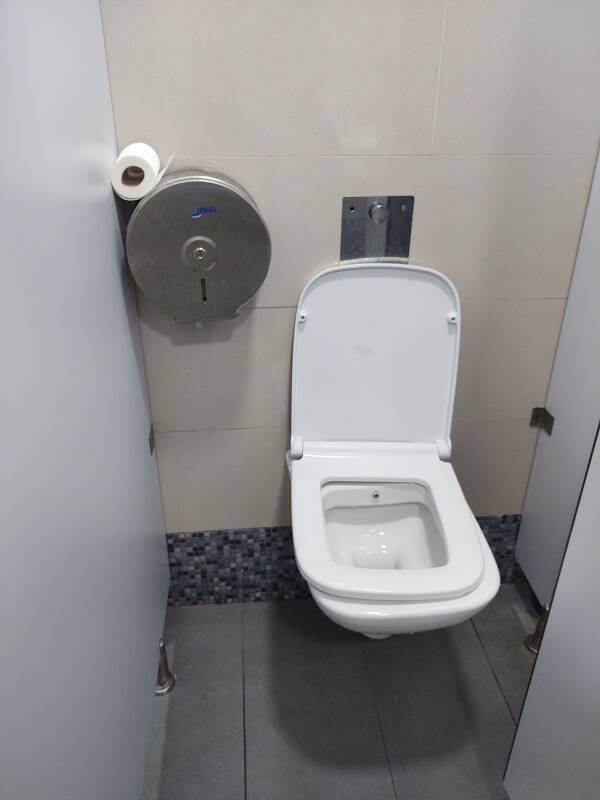
The men's room had a nice large ablutions area, with seats for you to remove your shoes and socks to wash your feet. Because, yes, there's a prayer hall in the concourse.
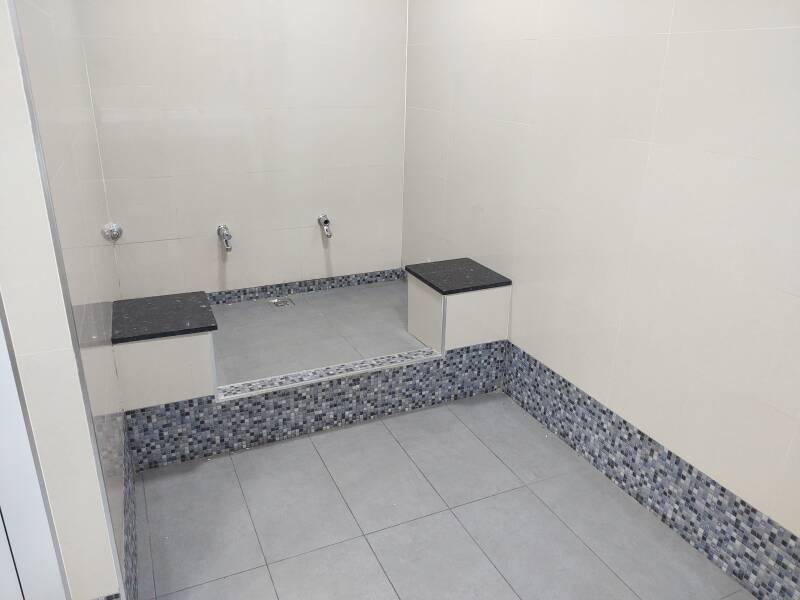
Casablanca to Tangier — Al Boraq Train
Back to the first few days of the trip. I traveled to Tangier on the Al Boraq, Morocco's very impressive high-speed train.
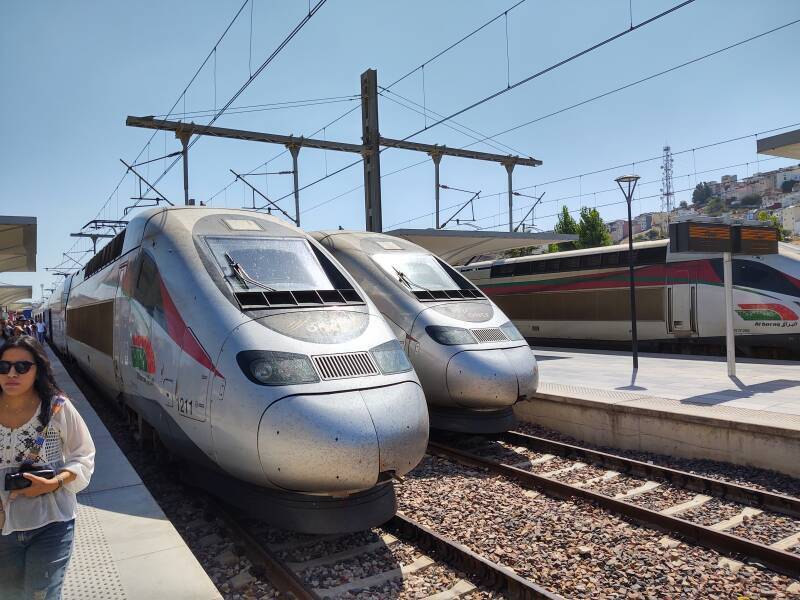
Morocco buys the same equipment that France uses on their TGV network. The Al Boraq can run at 320 kilometers per hour on the line from Casablanca north to Tangier, and they were building a line to the south from Casablanca to Marrakech while I was there. The cars have airliner-style toilet technology, very vigorous vacuum flushing down a funnel-shaped bowl with a small aperture.
The specialized page has much more on Moroccan train toilets.
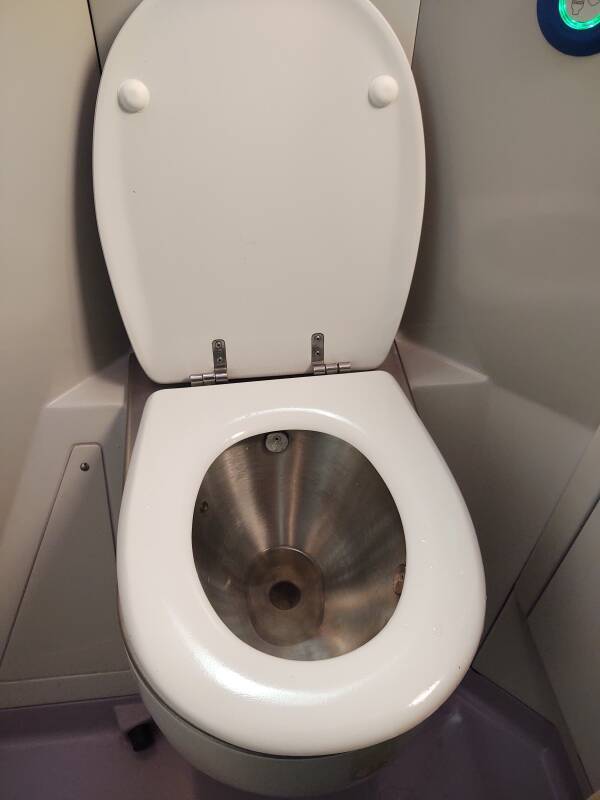
Tangier — Hôtel Fuentes
Guesthouses at Booking.comI stayed at the Hôtel Fuentes when I was in Tangier at the start of the trip. It's on the Petit Socco, a small square now reverting to its original Arabic name Souk Dakhli. My room was just 208 Dirham a night, about US$ 19.35.
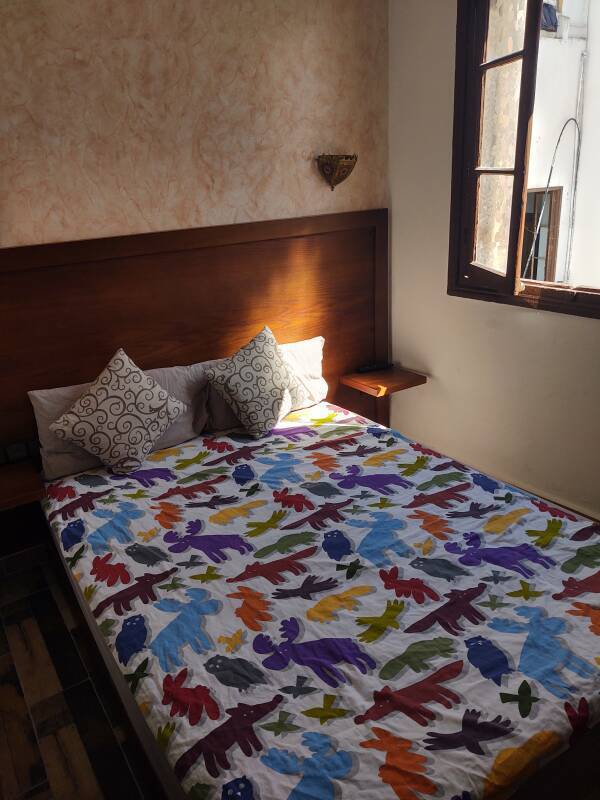
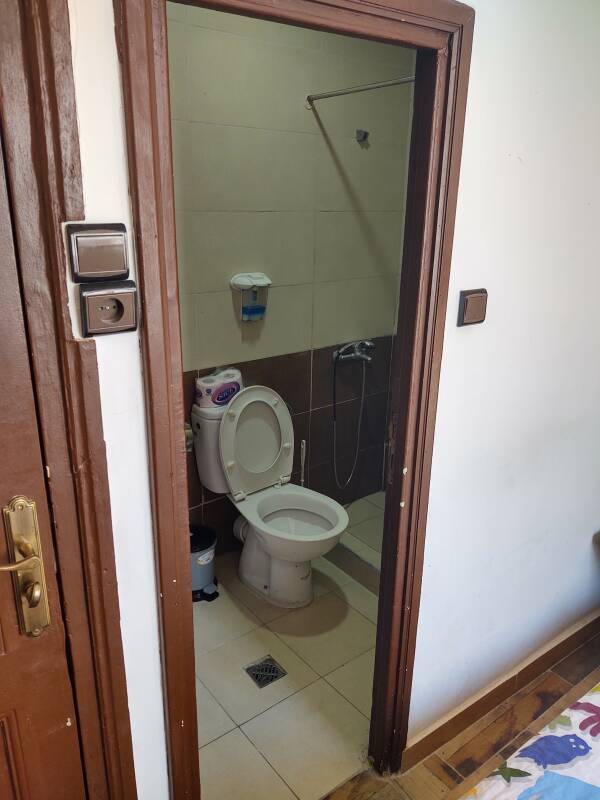
Where do I put used toilet paper? Wipe or Wash?
How do I clean myself, with paper or water?
Moroccan toilets generally have large-diameter pipes, although who knows what they connect to within the floors and walls.
Notice the small trash bin next to the toilet.
Where do you put used toilet paper in Morocco?
I was there for four weeks, and I was uncertain about this for most of the trip. There was usually, but not always, a small trash bin within arm's reach of the toilet, usually lined with a small plastic bag. And, when raised seat commodes like this were involved, there was almost always toilet paper nearby.
However, the local preference has been for water, which is also available.
I asked inn-keepers, and they always said something like "Oh, just put it wherever you want!" When I asked again, does that also include into the toilet, they would say "Oh yes, that's fine, no problem!"
Now, is it really not an issue? Or were they just being extra-agreeable as part of the hospitality?
It wasn't until late in the trip that one of them said something about it being safe to put the paper into the toilet because they were careful to buy a type of toilet paper that easily and quickly broke down in water.
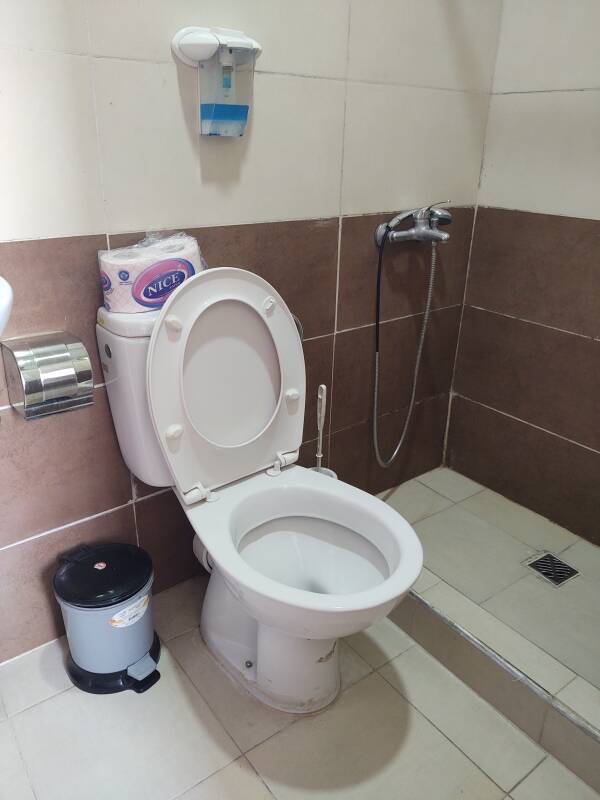
Hôtel Fuentes has a nice café on the first floor up from the street, with a balcony overlooking the historic small square. It was a pleasant place to sit with a glass of hot, sweet, mint tea, the Moroccan national beverage, and watch people in the square. Instead of going up another floor to my room, I could instead use the bathroom just off the café. See the specialized Moroccan squat toilet page for nothing but these floor-mounted units.
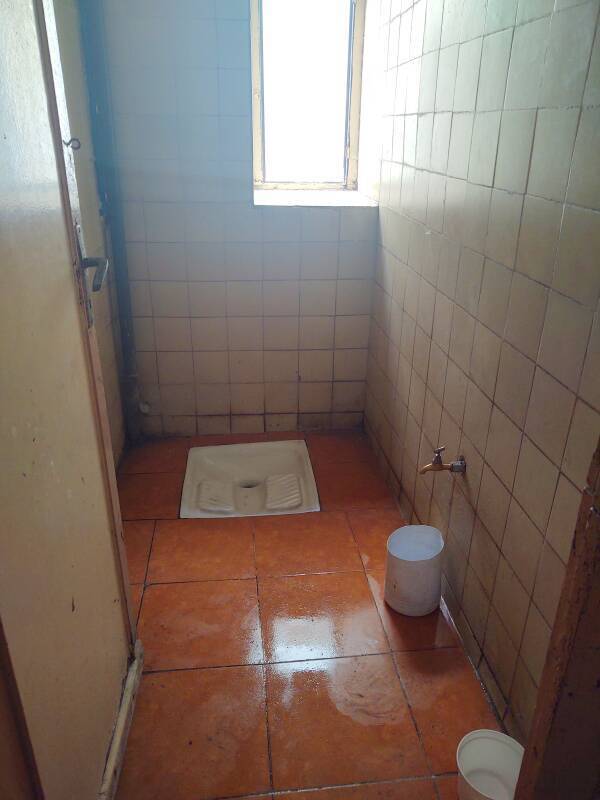
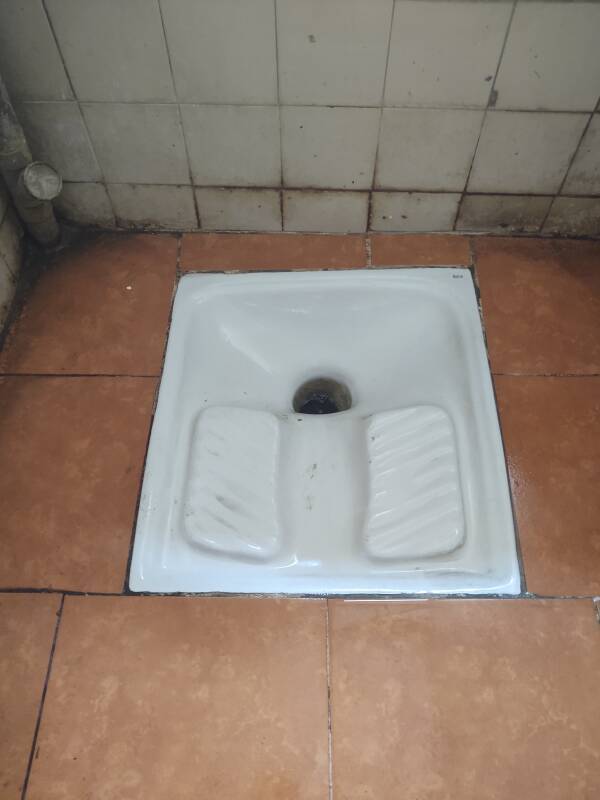
The Hôtel Fuentes had a fountain in the hallway on the café level, one floor up from the street. Yes, a blue border for "used", as it was a nice place to refill my water bottle on my way out to explore the medina.
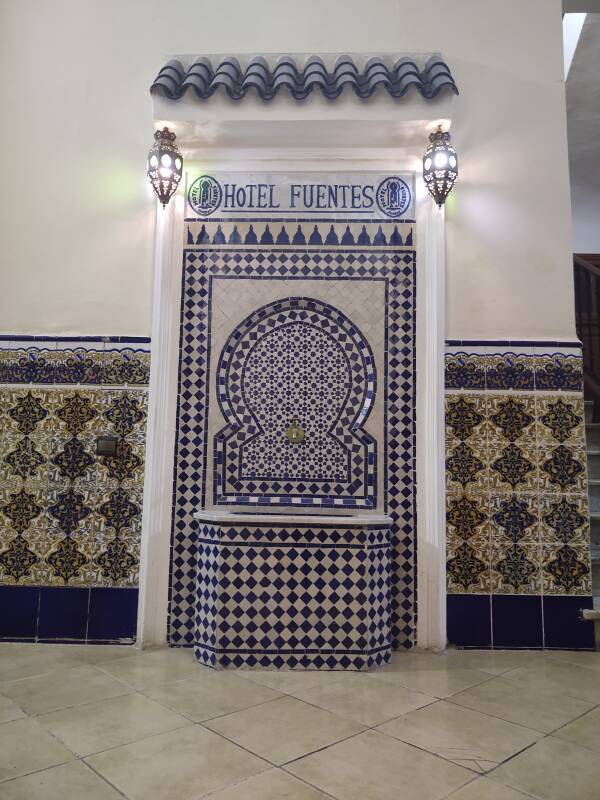
Tangier — American Legation
Tangier was the home of the United States' first overseas property, a gift from the Sultan used as the US diplomatic legation.
AmericanLegation
in Tangier
In 1777 Morocco had become the first country in the world to recognize the U.S.A. as an independent country. The Moroccan-American Treaty of Friendship, signed in 1786, was the first treaty between the U.S.A. and any Arab, African, or Muslim country. It remains the longest unbroken treaty relationship in U.S. history.
In 1821 Sultan Moulay Suliman gave the U.S. a two-story building in the southern part of the Tangier medina, to be used as a diplomatic mission.
All through the 19th century and into the 20th century, most diplomatic missions were legations staffed by ordinary diplomats. An embassy, on the other hand, was a special diplomatic mission headed by an ambassador, the personal representative of a monarch. So, the only embassies were those that major powers that were monarchies sent to other major powers that were monarchies. And, "monarchy" was usually restricted to the inter-related royal families of Europe.
Embassies became the international standard for diplomacy after World War II. Now an embassy, the Tangier legation was the first U.S. diplomatic mission to receive Marine Security Guards when that program began in 1949.
Morocco's diplomatic capital moved to Rabat in 1956 when the French Protectorate ended. The American Legation in Tangier became a consulate and served other diplomatic and governmental functions.
By 1976 the legation was descending into disrepair. A group of former U.S. diplomats started the Tangier American Legation Museum Society to repair and maintain the facility. Since then it has served a cultural center, research library specializing in Arabic language studies, and a museum.
Here is one of the nice diplomatic bathrooms, just off one of the rooms where the diplomats would meet.
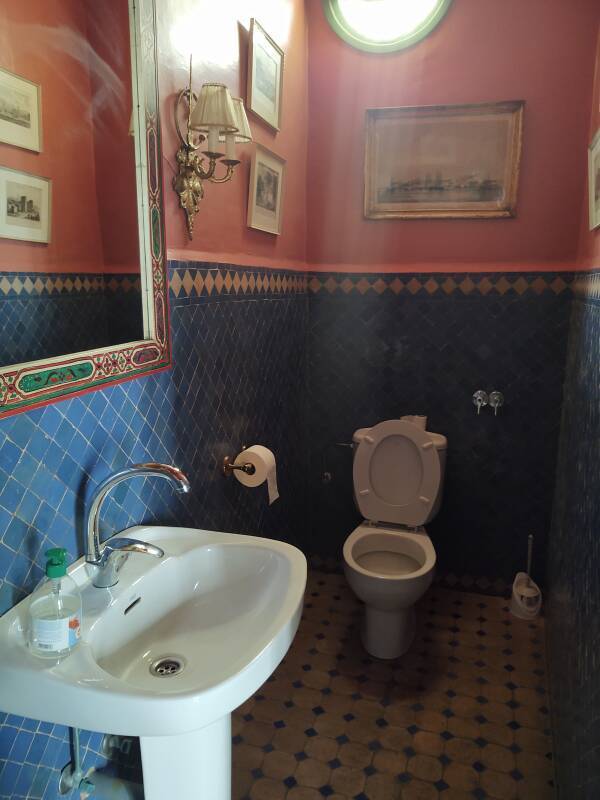
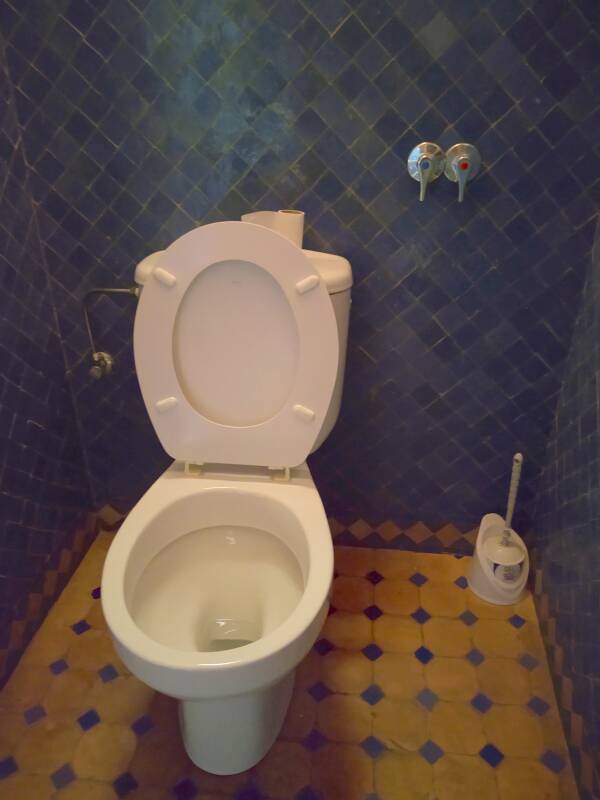
This one is off one of the enclosed courtyards within the complex.
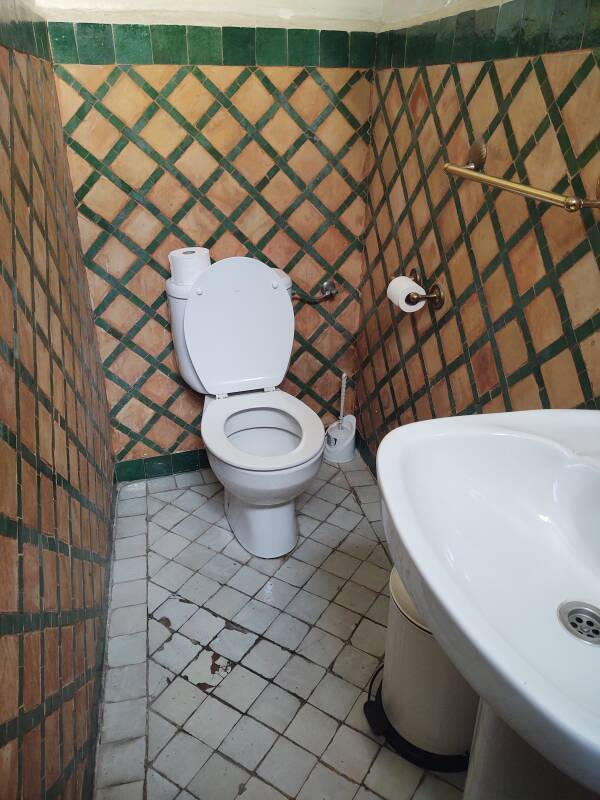
Tangier — Public Toilets
The medina is literally "the city", today referring to the old core of a Moroccan city. Enclosed within walls, accessed by a limited number of gates, the medina is filled with narrow passageways. Small cars or trucks may have very limited access, but given how narrow and crooked the lanes are, and how there are steps in places, small motorcycles are the only motor vehicles that can access most of a medina.
A medina will have at least one Friday mosque, a congregational mosque where an imam leads the Friday prayers. In the Tangier medina, the main Friday mosque is just off the east end of Petit Socco or Souk Dakhli, toward the harbor, in a building that once was a church when Portugal controlled Tangier from 1471 to the 16th century, merging with Spain until 1661.
This public toilet is across the street from that mosque. Women's, men's, and even wheelchair-accessible once you get over the step at the entrance. And, some small steps inside. Public toilets have attendants, one of them could help a wheelchair user.
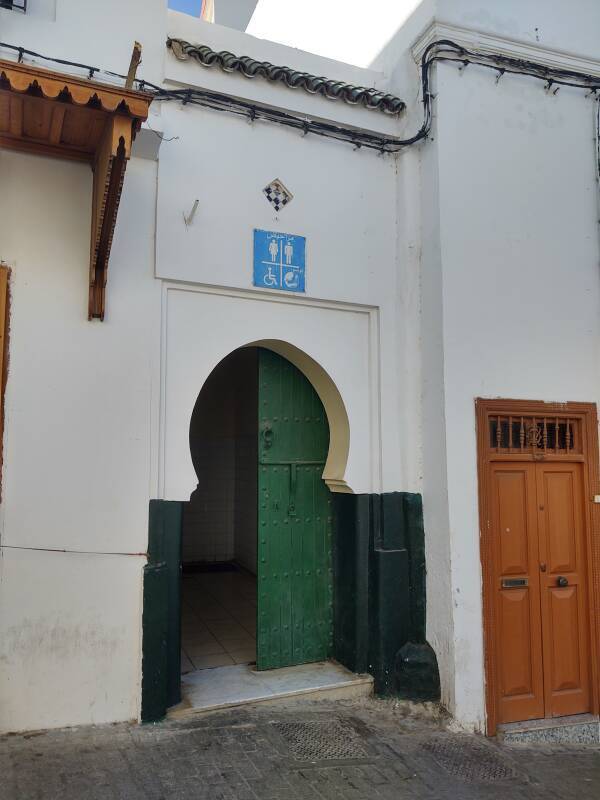
Tangier — Medina Fountains
Moroccan neighborhoods are based around mosques.
Each mosque needs a source of water for ablutions, so people can clean themselves before prayer. That means a fountain at the very least.
There will probably be a hammam, a bath, and public toilets. The bath water needs to be heated, no ice-water bidets for the residents. The fire that heats the water can also be part of ovens forming the neighborhood bakery. A bakery may sell baked goods, but even the smallest and simplest ones provide baking service. People in the neighborhood can make their own bread dough, cut or punch a distinctive pattern into it, and take it to the neighborhood bakery's oven. The distinctive pattern lets everyone find their baked bread when it's ready.
The first fountain seen here was not operating, but most of them still operate and are used by local residents. And, by visitors like me topping off water bottles.
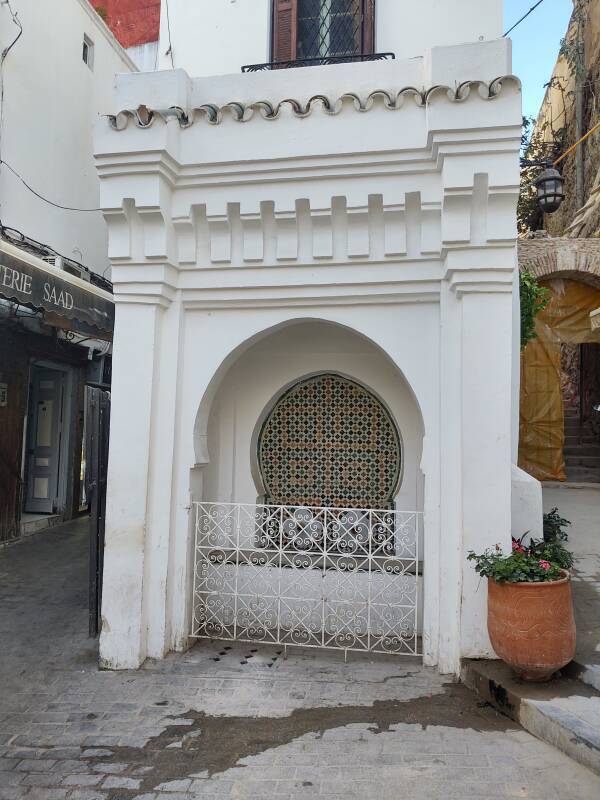
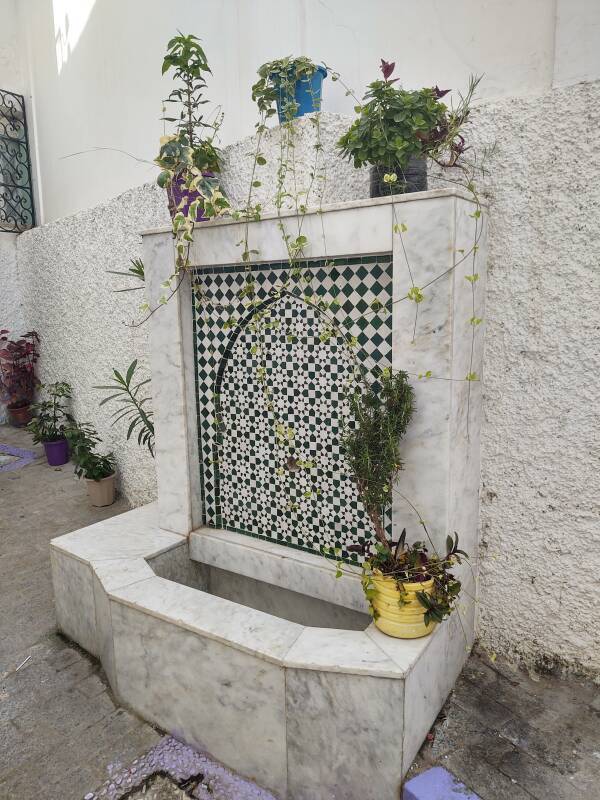
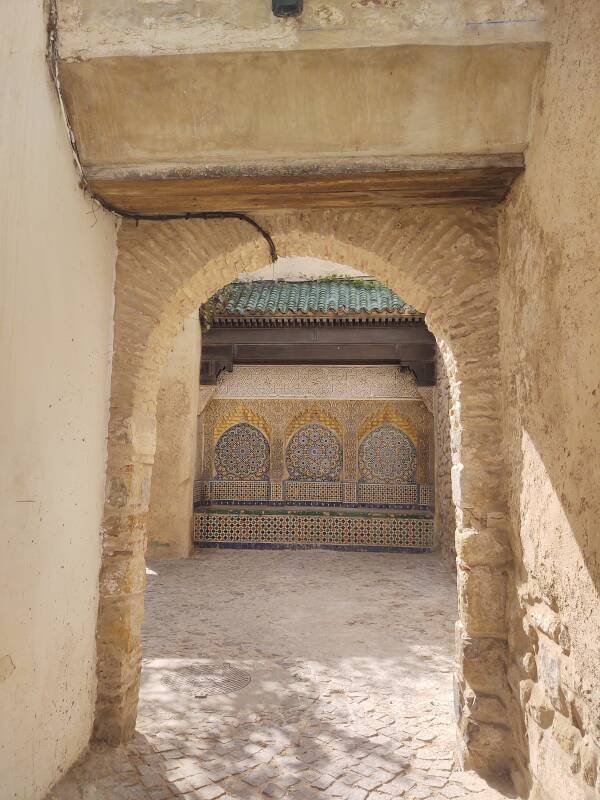
This triple fountain was also shut down.
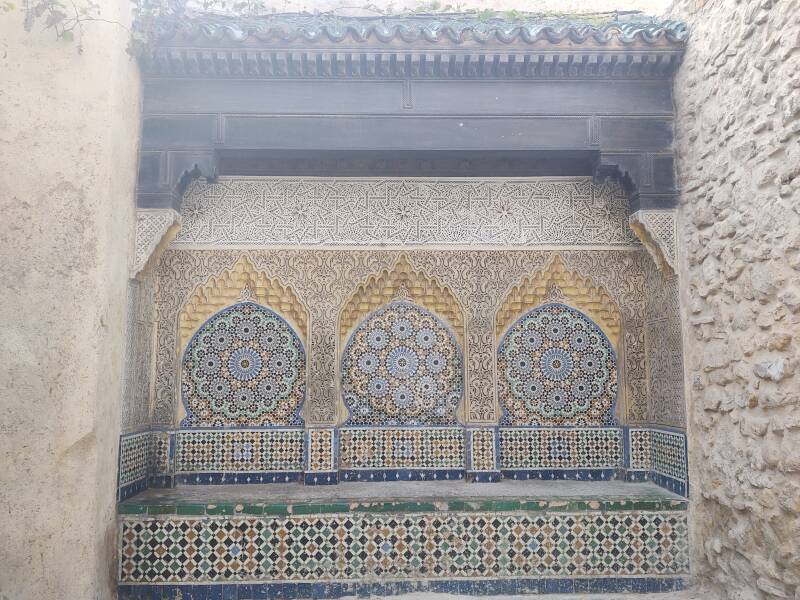
Most of the fountains, however, were in use.
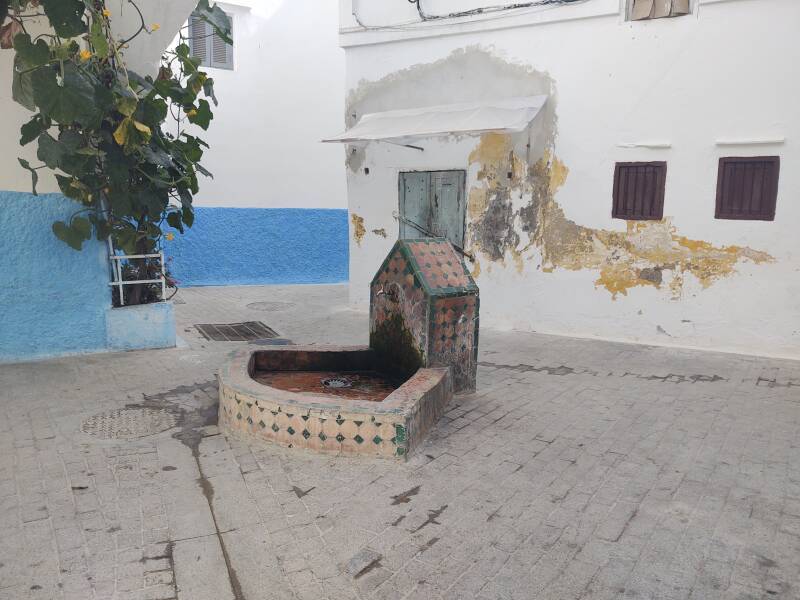
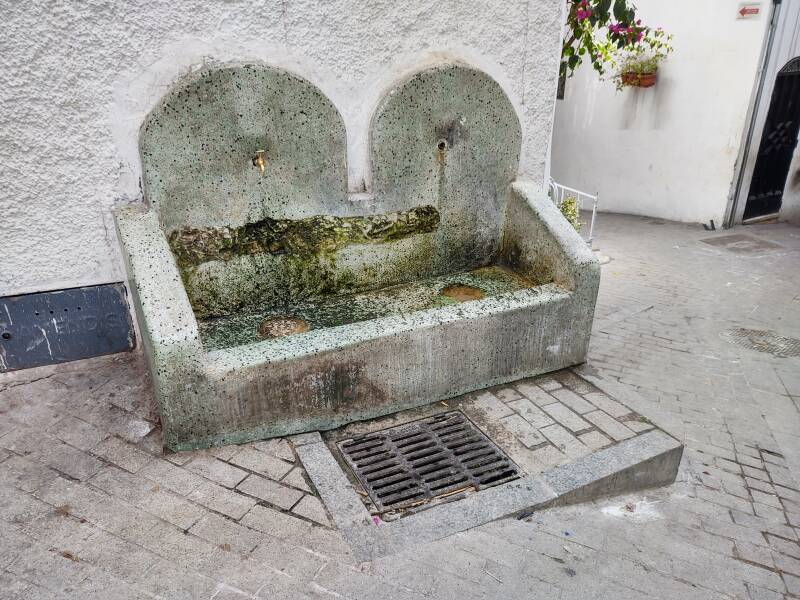
Tangier — Hotel Mauritania
Guesthouses at Booking.comI returned to Tangier for a few days at the end of the trip. I stayed at the Petit Socco or Souk Dakhli again, but on the opposite side of the narrow square at the Hotel Mauritania. I arrived very early in the morning on the overnight sleeper train from Marrakech. I stored my bag and returned in the afternoon to check in. The first picture here is a shared toilet I used when I first arrived.
The shattaf here has a small nozzle placed on a small nail protruding from the wall. Here's a case of neither toilet paper nor trash bin within reach of the toilet. There's a trash bin across the room, by the sink, so I used my paper, which was pocket packs of facial tissue not designed to quickly break down in water, and took it across the room to the trash bin.
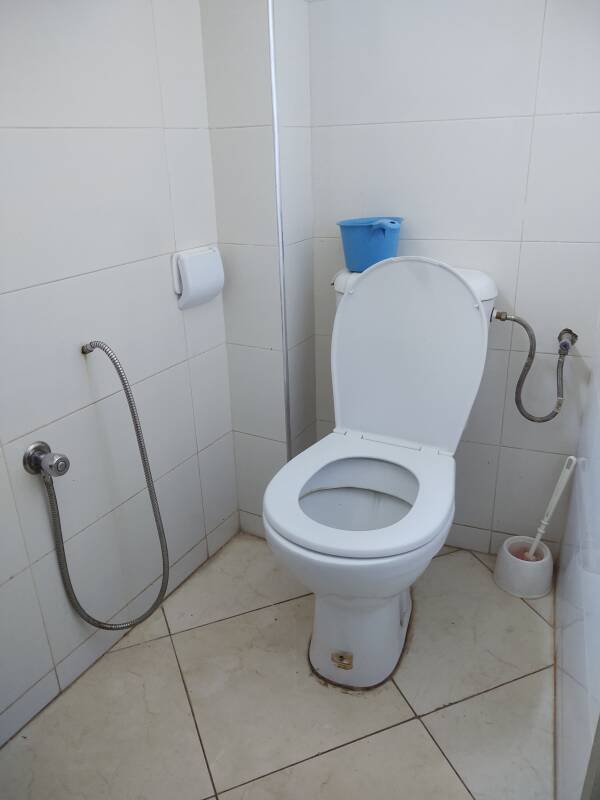
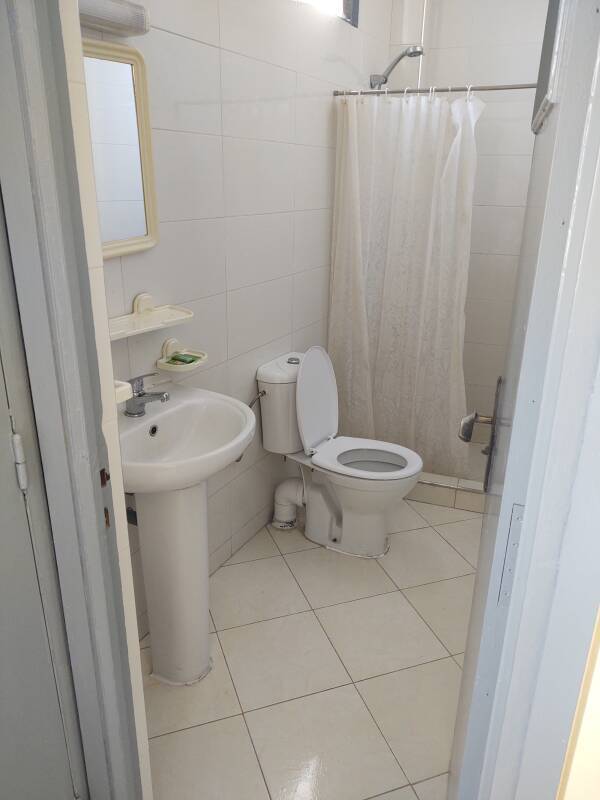
The second picture above is the bathroom in my room. I had reserved a room with shared bath for 195 Dirham or $US 18 per night, but this was one of the instances where they upgraded me to a room with private full bath for no added charge. Similarly, no paper and a trash bin close to the door.
Tangier — Cafe Hafa
Cafe HafaMusicians, writers, and the Strait of Gibraltar
Paul Bowles, William S. Burroughs, the Rolling Stones, Led Zeppelin, and other writers and musicians frequented Café Hafa in Tangier. It's on a bluff west of the kasbah, overlooking the Strait of Gibraltar. The views are fantastic. The food and drink are simple, and excellent. See the dedicated page for much more about this café and its toilets.
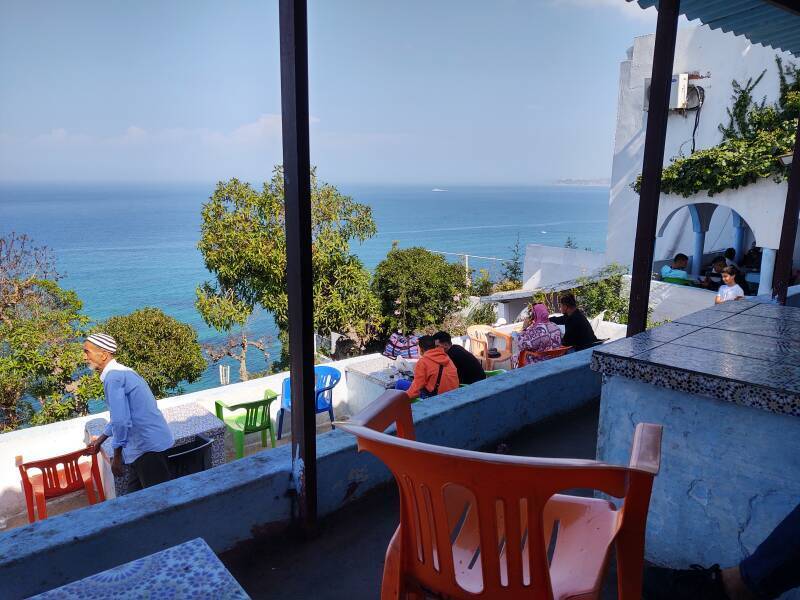
The toilets are Café Hafa are much as they have been since it was founded in 1921.
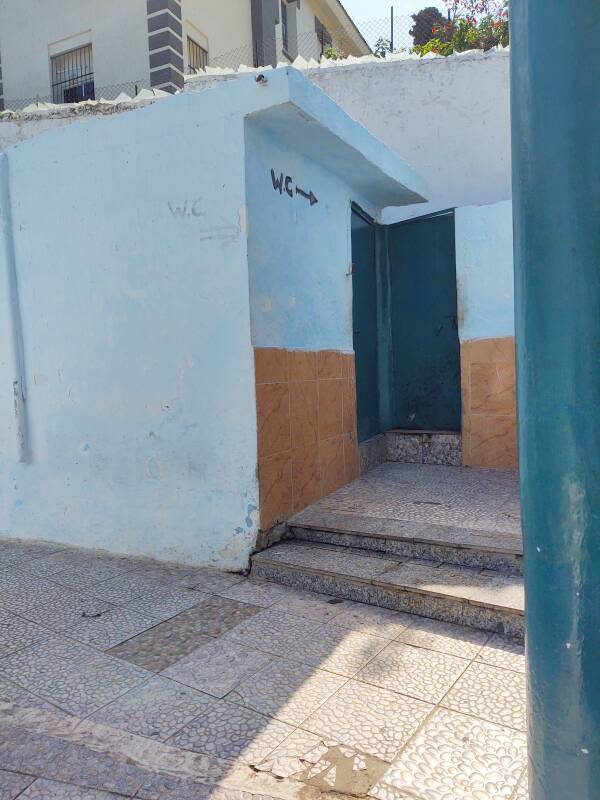
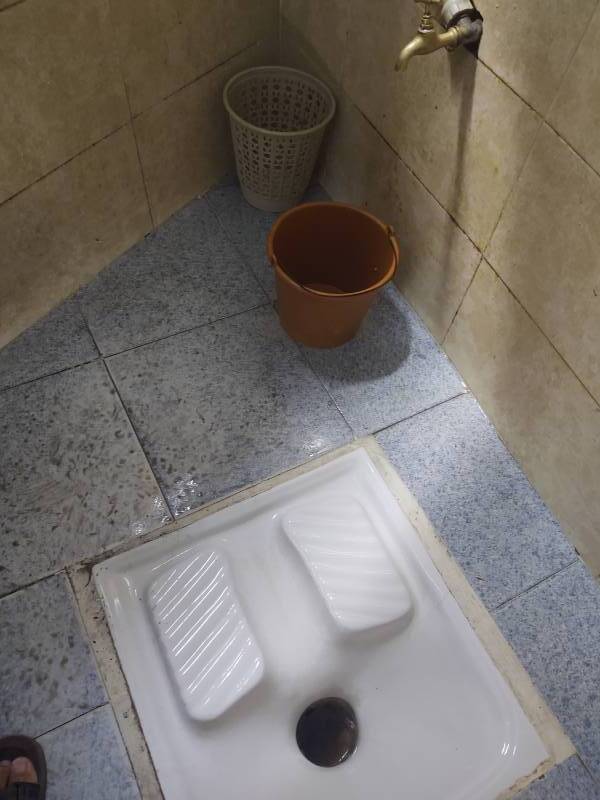
Musicians, writers, and the Strait of Gibraltar
The second picture above shows the low water spigot and the red plastic bucket — for some reason they are almost always red — for water cleaning. And there's also a small bin in case you were routinely carrying a packet or two of facial tissues. See the dedicated page for more pictures, including another toilet at the café.
If you're following the pages in the order I visited places during my trip, the next stop is the city of Meknès. Or, feel free to jump around:

